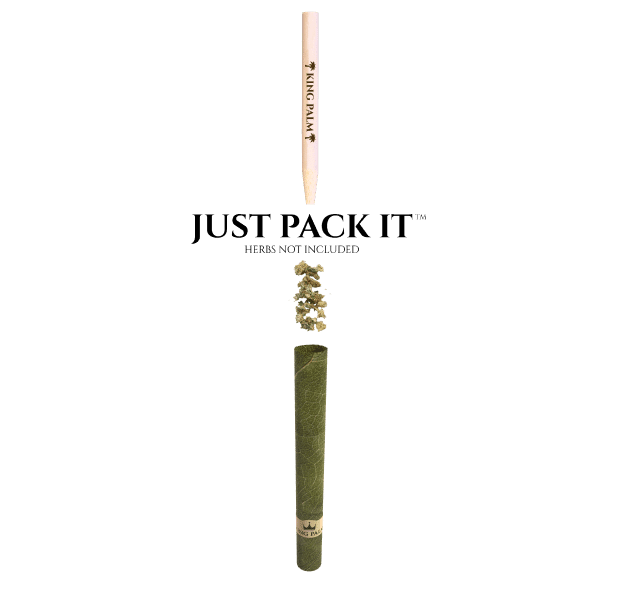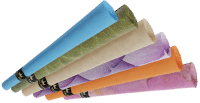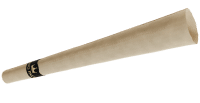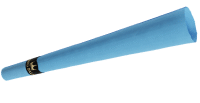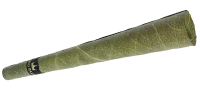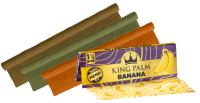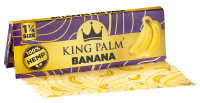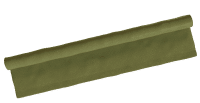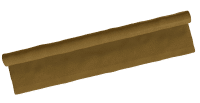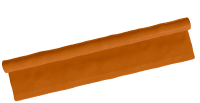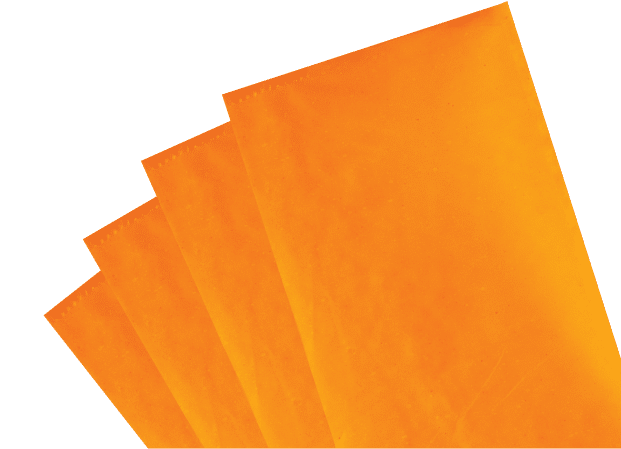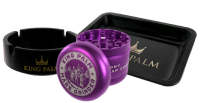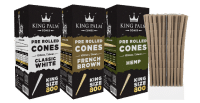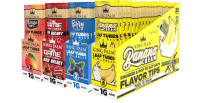Somewhere between your fourth or fifth joint, you realize the filter, or lack of one, makes or breaks the whole experience. Whether you’re lighting up solo or passing to friends, nobody wants a soggy tip, burnt fingers, or loose herb flying into their mouth.
If you’re rolling your own, getting the filter right is a non-negotiable. But not everyone wants to spend ten minutes folding paper just to get a smooth hit. That’s where this guide comes in. We’ll walk you through exactly how to make a joint filter that works, and show you a smarter alternative that skips the guesswork entirely.
What Is a Joint Filter, Really?
The filter at the end of your joint isn't decorative. It holds structure, keeps your flower where it belongs, and protects your lungs from inhaling ash. A proper filter creates a channel for airflow while giving your joint a clean finish. It’s the difference between a smooth draw and coughing halfway through the sesh.
You don’t need a filter to light a joint. But once you’ve used a good one, you won’t want to go back.
What Makes a Good Filter?
The right filter needs three things:
-
A rigid structure
-
Breathable material
-
Zero contaminants.
Most DIY filters use cardboard or business cards, but those can collapse or leave a weird aftertaste, especially if you grab the glossy kind.
If you want something that cools your smoke and naturally filters out debris, corn husk filters are worth trying. King Palm’s filters are made from hand-rolled corn husk. They hold shape, chill the draw, and you can even pinch them to control the airflow. It’s one of the cleanest, most practical filter upgrades out there.
DIY Joint Filter: Step-by-Step Guide
The W-Accordion Method
Start with a small rectangle of thin cardboard, about the size of your pinky nail. Fold a few tight zigzags into one end to form a “W,” then roll the rest around it. This gives your filter structure while keeping airflow open.
This method works well for joints that need a bit of back pressure and stability. But don’t fold it too tightly. Compressing the paper too much turns your joint into a straw full of drywall.
Straight Roll Filters
If the “W” seems too extra, try a simple roll. Curl the paper into a tight cylinder and slip it into the end of your joint. This approach is faster and pairs well with cone-style rolls.
The catch? You need the right width. Too narrow and it falls out. Too wide and you’re forcing it in like a cork.
Improvised Filters
Product Featured: Corn husk filters
When you’re out of supplies, get creative. Use index cards, business cards, or even brown paper from grocery bags. But always avoid anything glossy or dyed. Burning ink and plastic releases fumes that don’t belong in your lungs.
Natural, uncoated material is the safest call for a homemade filter. And if you want to skip the improvising altogether, consider grabbing pre-made corn husk filters that are built to last through the whole session.
Problems People Have With DIY Filters
Filters That Get Wet or Collapse
Once your joint starts to resin up, cheap cardboard filters turn soft and useless. They collapse under pressure, especially if you're passing it around or smoking something sticky. No one likes fishing a floppy tip out of their mouth halfway through a hit.
Filters That Block Airflow
Too many folds, or using material that’s too thick, can suffocate your joint. Airflow matters more than people think, when your pull feels like sucking through a wet napkin, you're wasting your smoke.
Users often say a wider filter helps. It opens the channel for airflow while still holding your herb in place. It’s a small tweak with a big payoff.
Filters That Burn or Taste Weird
Using the wrong type of paper can turn your filter into a source of bitterness or even toxic fumes. Inked flyers, magazines, and coated card stock all release nastiness when burned. A proper filter should disappear into the experience, not hijack the flavor.
The solution? Stick with natural materials or skip the guesswork entirely. Corn husk filters hold their shape, don’t burn, and actually improve flavor, not ruin it.
Why Corn Husk Filters Are Changing the Game
Built-In Cooling
Corn husk isn’t just sturdy, it cools the smoke as it travels through. That means fewer harsh hits and less throat burn, especially on longer sessions. Unlike cardboard or glass, the husk slows the airflow just enough to smooth things out.
This natural cooling effect is something you notice immediately, especially when you're not coughing halfway through the joint. It’s subtle, but it makes your herb feel like it got an upgrade.
Squeeze Control = Airflow Customization
Corn husk filters come with a perk that most people don’t expect: they’re responsive. If you want a looser draw, pinch them gently between your fingers. Want more resistance? Leave them as is.
King Palm’s filters are built with that in mind, hand-rolled, sturdy, and ready to be customized. No tech, no tools, just simple control over how your joint hits.
Cleaner, Stronger, and Pre-Made
Most DIY filters collapse under resin or moisture. Corn husk holds its shape from spark to roach. You don’t need to roll anything or fold paper in a parking lot. Just plug it in and light up.
They also work across formats, cones, blunts, even roll-your-owns. For anyone tired of fumbling with makeshift solutions, these filters are a time-saver and a quality upgrade in one hit.
Tips You Won’t Find in Most Guides
Flavor-Killing Mistakes
Flavored filters sound like a flex, until you realize they taste like synthetic candy and drown out your terps. Spray-on flavoring is the main culprit.
King Palm flips that on its head. Their filters house terpene capsules inside the tip. You get pure bud flavor first, and when you're ready, a clean terp kick that blends in, not bulldozes.
Glass Tips vs. Corn Husk
Glass looks cool, but it’s fragile. And it doesn’t filter anything. Smokers mention that while glass is reusable, it can get hot and doesn’t stop scooby snacks from slipping through.
Corn husk filters fix all that. They’re disposable, biodegradable, and they don’t shatter if you drop them. Better draw. Better protection. No clean-up.
Portability & Freshness
Homemade filters fall apart in your pocket. Even rolled tips can dry out and crack if you leave them out too long.
King Palm resealable packs solve this with built-in humidity control. Whether it’s your glovebox or a beach bag, your wraps stay flexible and ready whenever you are.
Make One or Pack Smarter?
Rolling your own filter is a solid move if you like the ritual and don’t mind the trial and error. But if you’re tired of wasting flower on clogged joints or weird-tasting paper, there’s a better way to roll.
Corn husk filters take the guesswork out. They hold up better, hit smoother, and don’t mess with your flavor. Whether you’re building your own or packing a ready-to-fill cone, they’re the cleanest upgrade you can make to your session.
And if you’re done folding paper altogether? King Palm’s pre-rolled wraps come loaded with a corn husk filter already inside. No glue, no additives, just clean design built for better hits.
Skip the Paper Cuts, Keep the Flavor
You don’t need to roll like a pro to smoke like one. Whether you’re a DIY roller or someone who just wants to pack and chill, your filter shouldn’t hold you back.
Try one sesh with a corn husk filter and you’ll taste the difference. No soggy tips. No burnt ends. Just smooth airflow, better control, and flavor that hits right where it should.
Head over to King Palm and check out their filters, wraps, and ready-to-pack rolls, they’re built for smokers who actually give a damn.

